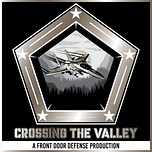About Chris
Christopher Kirchhoff has been a key figure in many major developments in defense and national security over the past decade. He served as Obama's director for strategic planning at the National Security Council, was a senior civilian aide to the chairman of the Joint Chiefs of Staff, and authored influential reports on America's war in Iraq, the space shuttle Columbia disaster, and the Ebola response. Crucially, along with Raj Shah, Kirchhoff helped establish the Defense Innovation Unit Experimental (DIU-X), which has become a vital piece in bringing modern technology into the mission of national defense.
About DIUx
The Defense Innovation Unit (DIU), formerly known as DIUx (experimental), was established in 2015 by Ash Carter to bridge the gap between the Pentagon and Silicon Valley. DIU's mission is to bring commercial technology from valley firms, big and small, into warfighting and to buy technology at Silicon Valley speed. The organization faced initial challenges, such as a lack of interest from venture firms in working with the government and a limited budget. However, under the leadership of Kirchhoff and Shah, DIU set clear goals, including demonstrating the use of commercial technology in warfighting, overcoming the Pentagon's reputation as a bad customer, and exporting the model across the department.
Key Takeaways
Establishing proof of concept is crucial for gaining support. DIU focused on showing that commercial technology from valley firms could be used in warfighting and handed off to a warfighting unit to succeed on the battlefield. Success stories, such as the use of Saildrone's autonomous sailboats for drug interdiction missions, helped demonstrate the value of DIU's approach.
Buying technology at Silicon Valley speed is essential for fostering innovation. DIU worked to overcome the Pentagon's reputation as a bad customer by figuring out ways to buy technology rapidly. This shift in approach helped attract more interest from venture capital firms and startups.
Scaling the model across the department is key for long-term success. DIU knew that unless they were able to bring others into using the model they pioneered, they wouldn't be able to scale. Exporting the model and its successes was a critical goal for the organization.
Collaboration between innovation units and combatant commands is vital for operational impact. Under new leadership, DIU is reconfiguring its structure to liaise more deeply with combatant commands, particularly Indo-PACOM and EUCOM, to bring technology forward that will create operational opportunities and make a meaningful difference in operational plans of real consequence.
Successful companies in the defense innovation space demonstrate a commitment to understanding political and organizational challenges. Companies like Anduril have succeeded not only because of their product engineering methods but also because of their commitment to navigating the political fight necessary to succeed in the defense industry.
You can pick up your copy of UnitX here
Timestamps
02:24-05:38: General Dempsey's Eye-Opening Ride in Google's Self-Driving Car
05:38-07:45: The Three Goals of DIU
16:51-21:25: DIU 3.0: Refocusing on Operational Impact with Increased Budget
21:25-23:10: Lessons from DARPA's History for New AI Initiatives in Government
24:10-25:34: The Future of Aircraft Carriers and the Navy's Reluctance to Adapt
27:07-30:11: Lessons Learned from the War in Ukraine for the U.S. Military and Defense Industry
30:15-33:08: Success Stories to Date
33:29-36:23: Reinventing the Defense Industrial Base for Innovation












Ep 21: Building a DoD Startup